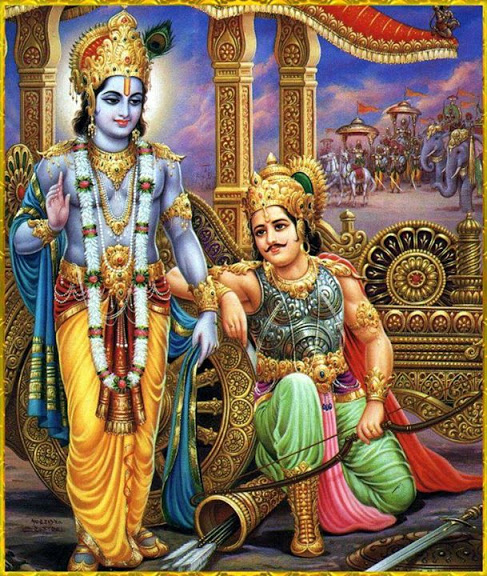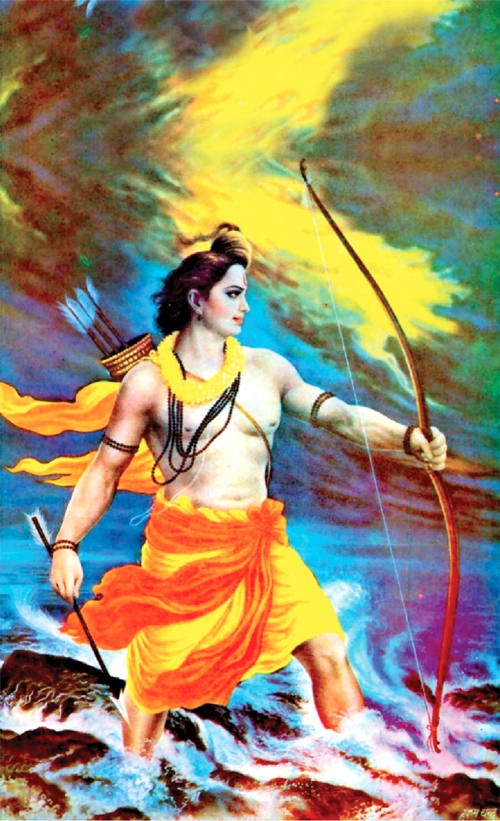#Ancient Culture ( Samskaram ) of India ( Bharatham ) - 6.3 : Swami Krishnananda.
======================================================================
================================================================
1.#OPINION : Saturday, December 25, 2021. 7:00.AM. 2580.
#Chapter 6: Quandaries in the Ramayana and Mahabharata -3.
=================================================================
In spiritual practice we move from effect to cause, and not from cause to effect. Lesser involvements are to be taken into consideration first and they have to be handled effectively before the larger involvements are taken care of. It is something like knots in a rope tied up one over the other, wherein the outer knot is attempted to be untied first and the inner knots are removed afterwards because they are at the root and they are the support. In a similar manner in the treatment of illnesses, for instance, we take into consideration the acute form of a disease first and the chronic form afterwards. Likewise is the spiritual encounter in the world. The Ravana-Kumbhakarna episode, among many others of that kind, illustrates the spiritual activity of the human individual in withdrawing its concern from spiritual perception first and then trying to bring about a state of inner illumination afterwards.
The externality that is involved in human life is a subsequent phenomenon arisen after the creation of individuality itself. There cannot be society unless there are individuals. There cannot be perception of a thing outside unless there is a perceiver. So the movement is from the internal to the external. The internality involved in perception is, again, a consequence of a drop or a fall from universality. God, Vishnu, Narayana, who is the embodiment of universality, has to descend into human form as Rama, for instance, and then face the social consequences, all which are the whole story of the Ramayana.
The coming of God into the state of Incarnation is an epic illustration of the fall of man, the coming down of the Universal into the state of particularity, where the story does not end. The Universal does not take an Avatar or Incarnation and then keep quiet. It engages itself in active operational occupation, the purpose for which the Incarnation has taken place. In the case of ordinary individuals, the purpose of the coming down of the Universal into the state of the particular is to concern itself with the whole social atmosphere, which includes not merely human beings outside but everything that is visible to the eyes – all that is subhuman, including animals, plants, and even inanimate nature.
Our concern with this level below the human is the activity of the human individual that has come down as a particular, as a descent, as it were, from the Universal that originally individuality was. Avataras, Incarnations, are the subject of the Puranas. We say Vishnu has taken ten Avataras, among many others. The incarnation of God is the concretisation of the Universal in the particular. Now, there is a distinction between ordinary human beings and Avataras. In one sense we have all come from the Universal Being, but none of us can be regarded as an Incarnation, or an Avatara, for an important reason. The Avatara, or the Incarnation, is conscious of its relation with the Universal from where it has come, or of which it is a descendent, whereas ordinary human individuals like us are not aware that we have come from the Universal. Both have come from the same source. The one is aware of its link with the Universal from where it has come, of which it is an offshoot, and the other is totally unconcerned with the origin from where it has come. In one of the verses of the Bhagavadgita, Bhagavan Sri Krishna tells Arjuna, “Many births I have taken and you also have taken, but I am aware of all these linkages of incarnations through which I have passed, whereas you are not aware of it.”











Comments
Post a Comment